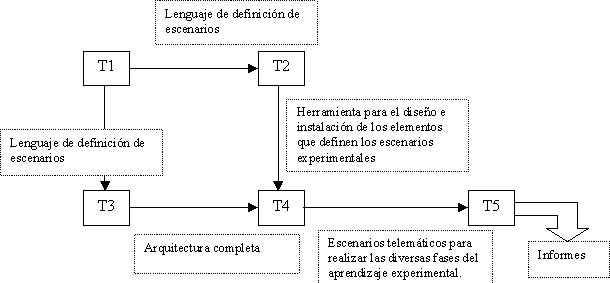|
The activities that are being undertaken in the project can
be grouped into five tasks:
T1 Design of experimental scenarios
Task description: The definition of experimental scenarios
will be undertaken in an iterative design cycle in order to
determine the necessary elements taking into account various
factors including computational cost.
T2
Desing and implementation of the architecture
Task description: A requirements analysis of the requirements
is undertaken and a specification produced. From this specification
three prototypes and one final version of the architecture
will take place.
T3
Design and implementation of an authoring tool
Task description: A tool will be designed and constructed
that facilitates the design of experimental scenarios and
their implantation. Using a generic language which defines
the type of elements that can be used in an experimental scenario,
an
interface based on visual elements is automatically generated
that will allow the designer (author) to create and generate
these scenes in a flexible and automatic way.
T4
Design of an application with the development of contents
and the integration of tools
Task description: The creation of educational scenarios
by modelling the contents in an educational markup language.
The way in which the available tools can be used in the scenarios
will be explored to improve integration.
T5
Organization of experiences with users, teaching evaluation
Task description: Evaluation will be undertaken in
the different development phases in the project in order to
obtain detailed data of what modifications are possible so
that the functionality of the system can be improved.
These
tasks have dependencies with each other, which are reflected
in Figure 1. The nodes represent the tasks, and the labels
of the arrows denote the results that the originating task
provides to the destination task.

Fig
1. Diagram of dependencies of tasks
|


